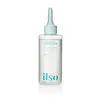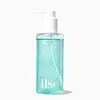What's inside
What's inside
 Key Ingredients
Key Ingredients

 Benefits
Benefits

 Concerns
Concerns

 Ingredients Side-by-side
Ingredients Side-by-side

Water
Skin Conditioning1,2-Hexanediol
Skin ConditioningGlycerin
HumectantGanoderma Lucidum Extract
Skin ProtectingSalix Alba Bark Extract
AstringentCodonopsis Lanceolata Root Extract
Skin ConditioningArctium Lappa Root Extract
Skin ConditioningChrysanthemum Sinense Flower Extract
CleansingButylene Glycol
HumectantPolyglyceryl-10 Oleate
Skin ConditioningViscum Album Leaf Extract
SoothingHamamelis Virginiana Extract
AntiseborrhoeicHydrogenated Lecithin
EmulsifyingPolyglyceryl-10 Isostearate
Skin ConditioningLavandula Angustifolia Extract
Skin ConditioningPhytosterols
Skin ConditioningEthylhexylglycerin
Skin ConditioningIllicium Verum Fruit Extract
PerfumingSodium Gluconate
Skin ConditioningLavandula Angustifolia Oil
MaskingPanthenol
Skin ConditioningScutellaria Baicalensis Root Extract
AstringentCarica Papaya Fruit Extract
Skin ConditioningSqualane
EmollientGlucose
HumectantChamomilla Recutita Flower Extract
MaskingCentella Asiatica Extract
CleansingPrunus Mume Fruit Extract
HumectantMalus Domestica Fruit Extract
AntioxidantVitis Vinifera Fruit Extract
Skin ConditioningPapain
Skin ConditioningHouttuynia Cordata Extract
Skin ConditioningChamaecyparis Obtusa Leaf Extract
Skin ConditioningOriganum Vulgare Leaf Extract
Skin ConditioningPortulaca Oleracea Extract
Skin ConditioningCinnamomum Cassia Bark Extract
MaskingLactobacillus/Soybean Ferment Extract
Skin ConditioningMadecassoside
AntioxidantCitric Acid
BufferingGardenia Florida Fruit Extract
Skin ConditioningPolygonum Cuspidatum Root Extract
AntioxidantMyrciaria Dubia Fruit Extract
Skin ConditioningTerminalia Ferdinandiana Fruit Extract
AntioxidantWater, 1,2-Hexanediol, Glycerin, Ganoderma Lucidum Extract, Salix Alba Bark Extract, Codonopsis Lanceolata Root Extract, Arctium Lappa Root Extract, Chrysanthemum Sinense Flower Extract, Butylene Glycol, Polyglyceryl-10 Oleate, Viscum Album Leaf Extract, Hamamelis Virginiana Extract, Hydrogenated Lecithin, Polyglyceryl-10 Isostearate, Lavandula Angustifolia Extract, Phytosterols, Ethylhexylglycerin, Illicium Verum Fruit Extract, Sodium Gluconate, Lavandula Angustifolia Oil, Panthenol, Scutellaria Baicalensis Root Extract, Carica Papaya Fruit Extract, Squalane, Glucose, Chamomilla Recutita Flower Extract, Centella Asiatica Extract, Prunus Mume Fruit Extract, Malus Domestica Fruit Extract, Vitis Vinifera Fruit Extract, Papain, Houttuynia Cordata Extract, Chamaecyparis Obtusa Leaf Extract, Origanum Vulgare Leaf Extract, Portulaca Oleracea Extract, Cinnamomum Cassia Bark Extract, Lactobacillus/Soybean Ferment Extract, Madecassoside, Citric Acid, Gardenia Florida Fruit Extract, Polygonum Cuspidatum Root Extract, Myrciaria Dubia Fruit Extract, Terminalia Ferdinandiana Fruit Extract
Cetyl Ethylhexanoate
EmollientEthylhexyl Palmitate
EmollientEthylhexyl Stearate
EmollientPEG-20 Glyceryl Triisostearate
EmollientCarthamus Tinctorius Seed Oil
MaskingOctyldodecanol
EmollientIsododecane
EmollientPolybutene
Water
Skin ConditioningMelia Azadirachta Leaf Extract
Skin ConditioningMelia Azadirachta Flower Extract
Skin ConditioningCoccinia Indica Fruit Extract
Skin ConditioningSolanum Melongena Fruit Extract
Skin ConditioningAloe Barbadensis Flower Extract
EmollientAmber Powder
Curcuma Longa Root Extract
MaskingOcimum Sanctum Leaf Extract
Skin ConditioningCorallina Officinalis Extract
Skin ConditioningMoringa Oleifera Seed Oil
EmollientSimmondsia Chinensis Seed Oil
EmollientMelaleuca Alternifolia Leaf Extract
PerfumingChamomilla Recutita Flower Extract
MaskingCentella Asiatica Extract
CleansingAgave Tequilana Leaf Extract
AstringentBeta Vulgaris Root Extract
Skin ConditioningBrassica Oleracea Capitata Leaf Extract
Skin ConditioningCarica Papaya Fruit Extract
Skin ConditioningDaucus Carota Sativa Root Extract
Skin ConditioningVaccinium Angustifolium Fruit Extract
Skin ProtectingSophora Angustifolia Root Extract
Skin ConditioningPolygonum Cuspidatum Root Extract
AntioxidantPoncirus Trifoliata Fruit Extract
Skin ConditioningSaururus Chinensis Leaf/Root Extract
AntimicrobialCinnamomum Cassia Bark Extract
MaskingSalix Alba Bark Extract
AstringentPEG-10 Glyceryl Isostearate
EmollientTocopherol
AntioxidantSqualane
EmollientButylene Glycol
HumectantPanthenol
Skin ConditioningPropylene Glycol
Humectant1,2-Hexanediol
Skin ConditioningMethylpropanediol
SolventPentylene Glycol
Skin ConditioningOctanediol
Ethylhexylglycerin
Skin ConditioningParfum
MaskingCetyl Ethylhexanoate, Ethylhexyl Palmitate, Ethylhexyl Stearate, PEG-20 Glyceryl Triisostearate, Carthamus Tinctorius Seed Oil, Octyldodecanol, Isododecane, Polybutene, Water, Melia Azadirachta Leaf Extract, Melia Azadirachta Flower Extract, Coccinia Indica Fruit Extract, Solanum Melongena Fruit Extract, Aloe Barbadensis Flower Extract, Amber Powder, Curcuma Longa Root Extract, Ocimum Sanctum Leaf Extract, Corallina Officinalis Extract, Moringa Oleifera Seed Oil, Simmondsia Chinensis Seed Oil, Melaleuca Alternifolia Leaf Extract, Chamomilla Recutita Flower Extract, Centella Asiatica Extract, Agave Tequilana Leaf Extract, Beta Vulgaris Root Extract, Brassica Oleracea Capitata Leaf Extract, Carica Papaya Fruit Extract, Daucus Carota Sativa Root Extract, Vaccinium Angustifolium Fruit Extract, Sophora Angustifolia Root Extract, Polygonum Cuspidatum Root Extract, Poncirus Trifoliata Fruit Extract, Saururus Chinensis Leaf/Root Extract, Cinnamomum Cassia Bark Extract, Salix Alba Bark Extract, PEG-10 Glyceryl Isostearate, Tocopherol, Squalane, Butylene Glycol, Panthenol, Propylene Glycol, 1,2-Hexanediol, Methylpropanediol, Pentylene Glycol, Octanediol, Ethylhexylglycerin, Parfum
 Reviews
Reviews

Ingredients Explained
These ingredients are found in both products.
Ingredients higher up in an ingredient list are typically present in a larger amount.
1,2-Hexanediol is a synthetic liquid and another multi-functional powerhouse.
It is a:
- Humectant, drawing moisture into the skin
- Emollient, helping to soften skin
- Solvent, dispersing and stabilizing formulas
- Preservative booster, enhancing the antimicrobial activity of other preservatives
Butylene Glycol (or BG) is used within cosmetic products for a few different reasons:
Overall, Butylene Glycol is a safe and well-rounded ingredient that works well with other ingredients.
Though this ingredient works well with most skin types, some people with sensitive skin may experience a reaction such as allergic rashes, closed comedones, or itchiness.
Learn more about Butylene GlycolCarica Papaya Fruit Extract comes from the papaya fruit. Papayas were first domesticated in Mexico and Central America.
This fruit extract contains papain and chymopapain, two types of enzymes. These enzyme have exfoliating and anti-inflammatory properties. One study shows papain may help reduce scarring.
Papaya is also a rich source of antioxidants. Antioxidants protect your skin against damage from free-radical molecules. This may help protect against signs of aging. One antioxidant present in papayas is lycopene.
Papaya also contains Vitamin A, also known as retinol.
While papaya is used as an ingredient to help lighten skin, research is limited on this.
The seeds of papaya have been found to have anti-fungal activity.
Learn more about Carica Papaya Fruit ExtractCentella Asiatica Extract (Centella) is derived from an herb native to Southeast Asia. It is famous for its anti-inflammatory and soothing properties.
Centella is rich in antioxidants and amino acids, such as Madecassic Acid and Asiaticoside.
Studies show the compounds in centella help with:
The combination of all these properties makes centella effective at soothing, hydrating, and protecting the skin.
Other great components of centella include Vitamin A, vitamin C, several B vitamins, and Asiatic Acid.
Fun fact: Centella has been used as a medicine and in food for many centuries. As a medicine, it is used to treat burns, scratches, and wounds.
Learn more about Centella Asiatica ExtractChamomilla Recutita Flower Extract comes from the Chamomile flower.
Chamomile is rich in antioxidants and has anti-inflammatory properties. Several compounds found in chamomile help with soothing, such as bisbolol.
Antioxidant components in chamomile make it an effective ingredient to help slow the signs of aging. Antioxidants help fight free-radical molecules, or molecules that may damage your skin.
Essential oils from chamomile have been found to improve wound healing due to its antimicrobial properties.
Ancient Greeks and Egyptians used Chamomile to treat skin redness and dryness. Chamomile has also been used to help treat stomach issues.
Learn more about Chamomilla Recutita Flower ExtractThis ingredient comes from the cinnamon tree native to southern China.
Though cinnamon has a wonderful taste, it can cause skin irritation due to its rich coumarins, cinnamaldehyde, and styrene content.
Ethylhexylglycerin (we can't pronounce this either) is commonly used as a preservative and skin softener. It is derived from glyceryl.
You might see Ethylhexylglycerin often paired with other preservatives such as phenoxyethanol. Ethylhexylglycerin has been found to increase the effectiveness of these other preservatives.
Panthenol is a common ingredient that helps hydrate and soothe the skin. It is found naturally in our skin and hair.
There are two forms of panthenol: D and L.
D-panthenol is also known as dexpanthenol. Most cosmetics use dexpanthenol or a mixture of D and L-panthenol.
Panthenol is famous due to its ability to go deeper into the skin's layers. Using this ingredient has numerous pros (and no cons):
Like hyaluronic acid, panthenol is a humectant. Humectants are able to bind and hold large amounts of water to keep skin hydrated.
This ingredient works well for wound healing. It works by increasing tissue in the wound and helps close open wounds.
Once oxidized, panthenol converts to pantothenic acid. Panthothenic acid is found in all living cells.
This ingredient is also referred to as pro-vitamin B5.
Learn more about PanthenolPolygonum Cuspidatum Root Extract comes from the Japanese Knotweed plant native to Japan, Korea, and China.
This plant contains anti-inflammatory and antioxidant properties. It contains high amounts of resveratrol, a potent antioxidant.
The root of the plant has been used in traditional folk medicine throughout Asia.
Learn more about Polygonum Cuspidatum Root ExtractSalix Alba Bark Extract comes from the white willow tree, which is native to Europe and Central Asia.
Salix Alba Bark Extract has often been described as salicylic acid's cousin. This is due to the salicin it contains. However, studies are limited showing salix alba bark to be an effective salicylic acid alternative.
Salicin does have anti-inflammatory and antioxidant properties. It has shown to decrease the formation of inflammatory mediators, such as tumor necrosis factor-α and nuclear factor-kappa B. Salicin also has a mildly exfoliating effect on the skin.
Several other components in salix alba bark extract also contain antioxidant properties, such as flavonoids and polyphenols. Antioxidants may help with anti-aging as they neutralize harmful free-radical molecules.
Willow Bark extract has been used for thousands of years. Ancient civilizations used white willow to help treat pain and fevers.
Learn more about Salix Alba Bark ExtractSqualane is an emollient that helps the skin hold onto moisture. It's an oily liquid that occurs naturally in certain types of fish and plant oils.
Because squalane boosts hydration in the skin, it also comes with plenty of benefits: it is an antioxidant and can help fight free radicals and skin damage. Squalane is also found to have a detoxifying effect when applied.
Squalane comes from squalene, which occurs naturally within the sebum of our skin. It is one of the oils our skin produces to keep itself hydrated. Squalane is the hydrogenated version of squalene and has a longer shelf life.
Research shows that squalane is non-irritating (even at 100% concentration).
In general, it's a fantastic ingredient. It does a great job at hydrating the skin, and it's suitable for those with sensitive skin.
The source of squalane may impact malassezia / fungal acne. This is because olive oil derived squalane can contain impurities such as fatty acids and plant waxes. Sugarcane derived squalane is recommended for anyone with malassezia concerns.
Is squalane vegan?
This depends on the source. Squalane can be derived from both plants and animals. Most squalane used in skincare comes from plants.
Please note: the source of squalane is only known if disclosed by the brand. We recommend reaching out to the brand if you have any questions about their squalane.
Read more about squalene with an "e".
Is squalane an oil?
Squalane is often called an oil, but it’s technically not; it’s a hydrocarbon, meaning it’s only made of carbon and hydrogen, unlike true oils which are triglycerides made of fatty acids and glycerol.
The term “oil-free” isn’t regulated, so companies can define it however they want. Some exclude all oils, while others just avoid mineral oil or comedogenic oils.
While some people avoid oils thinking they cause breakouts, the right kind of oil (or oil-like ingredient like squalane) can actually help balance and hydrate your skin. It’s worth testing out simple oils or squalane to see what works best for your skin.
Learn more about SqualaneWater. It's the most common cosmetic ingredient of all. You'll usually see it at the top of ingredient lists, meaning that it makes up the largest part of the product.
So why is it so popular? Water most often acts as a solvent - this means that it helps dissolve other ingredients into the formulation.
You'll also recognize water as that liquid we all need to stay alive. If you see this, drink a glass of water. Stay hydrated!
Learn more about Water